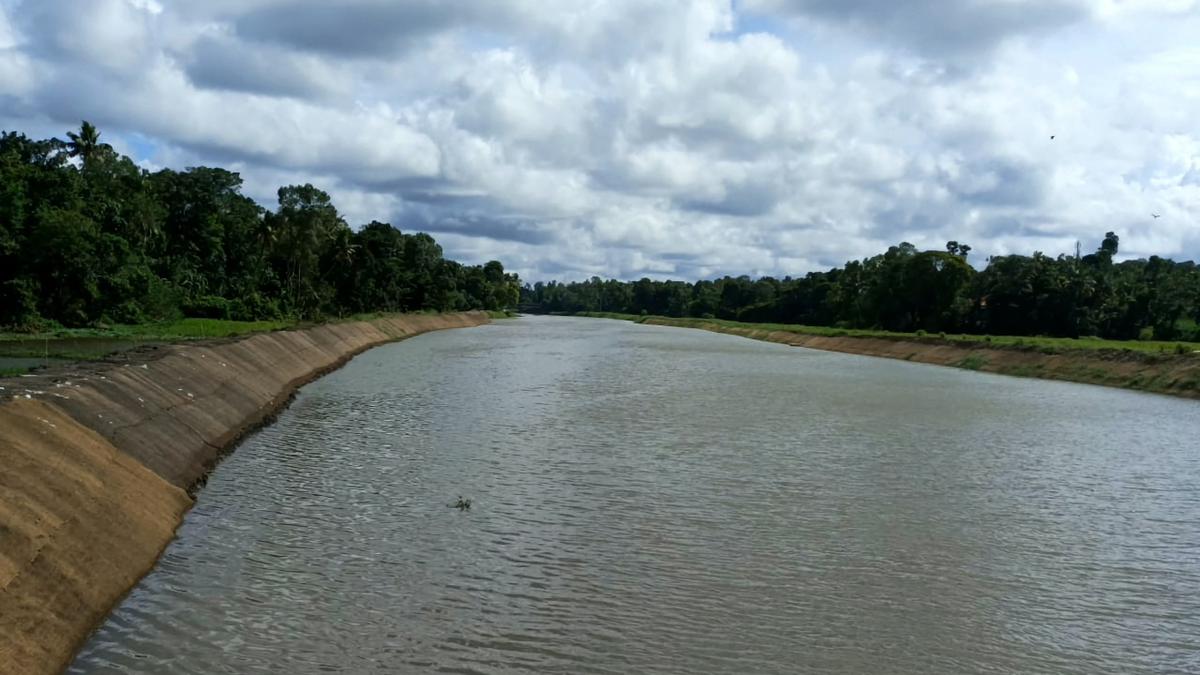News Highlight
Back to life: Rejuvenation of Kuttamperoor River in Alappuzha complete.
Key Takeaway
- The 7.2-kilometre-long waterbody, a tributary of the Pampa and Achencoil rivers, perished slowly in about 2005 due to years of rubbish dumping, encroachment, and other anthropogenic activity.
- It was resurrected over six years thanks to public participation and government assistance.
- The Utharappalli River Restoration Project has failed.
- As part of reviving the river, the Major Irrigation Department removed encroachments, deepened the channel, and built bunds on both sides.
- The revitalised river is 50 metres wide.
- Although the government had sanctioned 15.7 crores for the project, we completed it for 13 crores,” said a Major Irrigation department officer.
Rejuvenation of Kuttamperoor River
- Overview
- The Kuttamperoor River, a Pampa and Achenkovil Rivers tributary, is reborn.
- A initiative to eliminate accumulated rubbish has given the river a new lease on life.
- A 5-kilometre section of the river in Alappuzha district’s Budhanoor panchayat has been cleaned up.
- Thick layers of water, weeds and waste poured into the canal for over a decade had to be removed.
- A 12-kilometre-long river cleaning operation had been planned for many years but had not received adequate funding.
- The Mahatma Gandhi National Rural Employment Guarantee Scheme was used for the project.
- Approximately 200 people were hired over two months, resulting in 30,000 man-days.
River Rejuvenation
- About
- River rejuvenation is the process of reviving or restoring a river’s natural flow and health after it has been harmed by human activities such as;
- Trash disposal
- Encroachment
- Pollution.
- The procedure entails the removal of contaminants, the cleansing of riverbeds, and the restoration of the natural ecosystem surrounding the river.
- River rejuvenation is the process of reviving or restoring a river’s natural flow and health after it has been harmed by human activities such as;
- Impacts
- It can assist in restoring plant and animal habitats, boost biodiversity, and offer cleaner water for drinking and irrigation.
- Reviving rivers can also enhance tourism in the area and improve the livelihoods of those who rely on them.
- Furthermore, river rejuvenation can aid in flood control and damage reduction.
- A healthy river can absorb extra water during heavy rains and prevent flooding in downstream communities.
- This can save lives and property and lessen the economic burden of flooding.
- Initiatives
- In 2022, the Ministry of Environment, Forests, and Climate Change will produce Detailed Project Reports (DPRs) worth Rs. 19,000 crores to rejuvenate 13 important rivers through forestry initiatives.
- Jhelum, Chenab, Ravi, Beas, Sutlej, Yamuna, Brahmaputra, Narmada, Godavari, Mahanadi, Krishna, Cauvery, and Luni are the 13 rivers.
Detailed Project Reports (DPR)
- The DPR on river revitalisation is based on work completed under the National Mission for Clean Ganga (NMCG) in 2015-16.
- They are proposed under four major components:
- Forestry intervention implementation.
- Improving knowledge management and building national capacity.
- The replication of successful models is scaled up during the maintenance phase.
- Coordination at the national level for forestry interventions and river conservation.
- It focuses on recognising that the developing water issue results from river ecological degradation.
- To achieve the wide objectives of ‘Aviral Dhara’ (uninterrupted flow), ‘Nirmal Dhara’ (clean water), and environmental rejuvenation, the project took a multi-scale, multi-stakeholder, multidisciplinary, and holistic approach.
Benefits of a river rejuvenation project
- Afforestation on river banks leads to increased green cover.
- Measures to contain soil erosion.
- Recharge the groundwater table.
- Sequester carbon dioxide
- Catchment area treatment
- Ecological restoration,
- Moisture conservation
- Livelihood improvement and income generation.
- Ecotourism by developing riverfront
- Eco-parks and bringing awareness amongst the masses to improve water quality and river flow.
Examples of River Rejuvenation Project
- Rhine River
- The Rhine River in Europe was formerly heavily polluted.
- Thanks to a large clean-up operation, it has become a dynamic and thriving environment.
- Singapore River Clean-up
- Another good example of a river rejuvenation project is the Singapore River Clean-up.
- The project entailed cleaning up the heavily filthy river, making it a major tourist attraction and a cultural and social activity centre.
- Thames River Restoration
- The Thames River Restoration project in London, UK, has restored the river’s ecology and established new wildlife habitats.
- Ganga Action Plan
- The Ganga Action Plan is an ongoing effort in India to clean up and revitalise the heavily polluted Ganga River.
- The project includes a variety of interventions.
- It includes the construction of sewage treatment plants, the establishment of green belts along riverbanks, and the promotion of environmentally beneficial activities.
Way Forward
- Freshwater supplies are rapidly diminishing, adding to the growing water issue.
- The main issue to be addressed nationally is the diminishing and degradation of river ecosystems to achieve environmental conservation, climate change, and sustainable development goals.
- Climate changes, risks of plantation method failure, erroneous execution, and other factors are key hurdles to the River Rejuvenation DPR’s success.
- To reduce the risk of failure, the affected departments should ensure that full prior knowledge is obtained before implementation.
Pic Courtesy: The Hindu
Content Source: The Hindu



